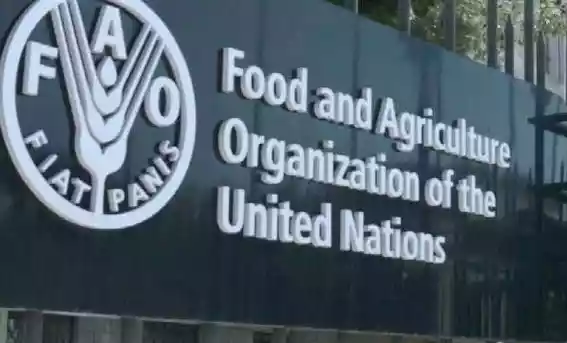
THE Food and Agriculture Organisation (FAO) says the increase in food import requirements to meet the local demand may intensify the negative effects of the weak currency on domestic food prices.
Zimbabwe is expected to import a significant amount of cereal this year as El-Nino-induced drought looms large.
In its latest report, the United Nations (UN) agency noted that persistent currency weakness has been the key factor underpinning the steep price growth throughout 2023.
“Following a period of relative stability in late 2023, prices of maize meal rose steeply in January 2024. The surge was largely attributed to the effects of a sharp loss of value of the national currency since last December,” the report read in part.
“The persistent currency weakness has been the key factor underpinning the steep price growth throughout 2023. The national inflation rate reached 35% in January 2024, up from 27% in the previous month.”
FAO said the situation has been worsened by the prevailing dryness and high temperatures which is likely to impact on the 2024 yield in the country.
“Looking ahead, an additional source of price pressure could emanate from a weather-related production decline in 2024 due to the prevailing dryness and high temperatures,” it said.
“Moreover, a subsequent increase in food import requirements to meet local needs could amplify the adverse effects of the weak currency on domestic food prices, though the current widespread use of the United States dollar is considered to help buffer this impact.”
- New perspectives: Building capacity of agricultural players in Zim
- Mangwe farmers benefit from agric projects
- Could climate change adaptation unlock Africa’s agricultural productivity?
- Tick-borne scourge kills 15 300 cattle
Keep Reading
The local currency has depreciated by 90,83% in 2023, according to Fincent Securities. It has fallen about 40% since January this year.
FAO said 3,5 million people are projected to be extensively food insecure and might need assistance at least until March.
It noted that 2024 was likely to be characterised by poor agricultural output, which would limit rural households’ income-earning opportunities from crop sales.
“The primary cause of the high prevalence of food insecurity is the exceptionally elevated levels of food prices that, combined with weak economic growth, have eroded the purchasing power of households. Reduced agricultural outputs from the previous cropping season in 2022/23 in southern and western provinces is a further factor stressing food insecurity,” it said.
“Food security conditions are expected to remain stressed in 2024, reflecting a likely poor agricultural output, which would limit rural households’ income-earning opportunities from crop sales and the continuing steep price growth that is curbing households’ capacity to purchase essential goods and services.”
The western part of the country experienced one of the driest starts of the rainy season in the last 40 years, potentially resulting in a shorter growing season and raising concerns for cereal yield potentials, according to the report.
“Planting of the summer 2024 cereal crops was completed in early January, later than normal reflecting the delayed onset of seasonal rainfall,” the UN agency said.
“Rainfall amounts continued to be below average in western provinces during December 2023 and January 2024 and coupled with an uneven temporal distribution of rains and higher-than-average temperatures, vegetation conditions in these areas have worsened, inferring likely damage to standing crops. Similar conditions were observed in the south, which are minor cereal-producing areas.”
The report also noted that the dry weather conditions are forecast to continue until the end of March, characterised by rainfall deficits, along with excessively high temperatures, worsening the yield prospects of the 2024 cereal crops
“In northern provinces, which are the highly productive agricultural areas, despite an upturn in rainfall amounts in January 2024, little to no rain was recorded in early February and these dry weather conditions are forecast to continue until the end of March.
“As these two months are critical for crop development, the likely rainfall deficits, along with excessively high temperatures, have significantly worsened the yield prospects of the 2024 cereal crops.”










